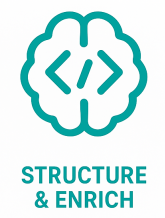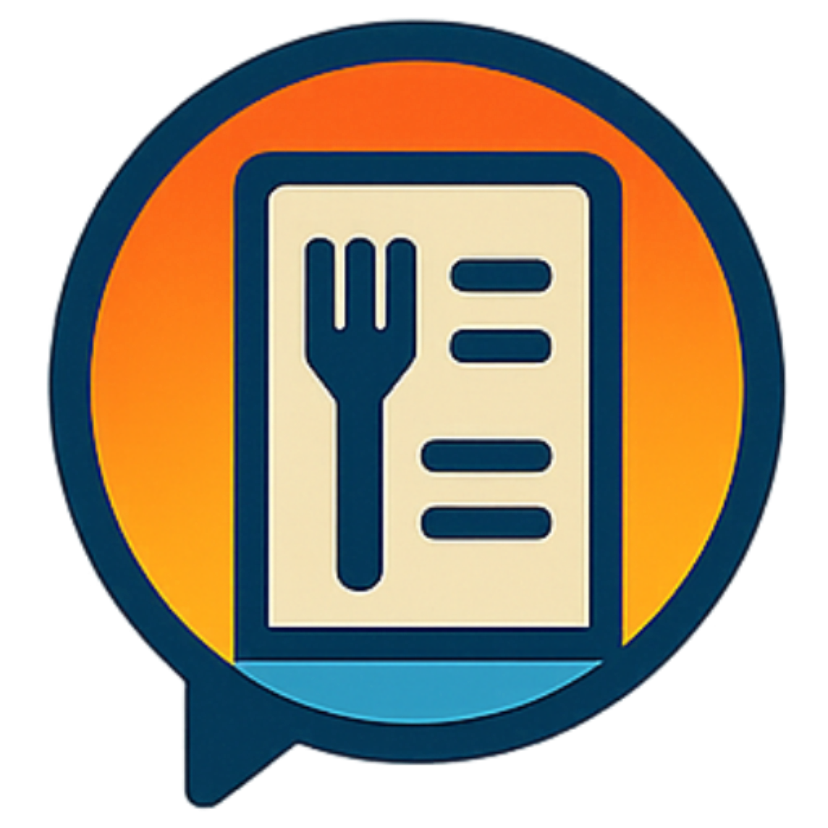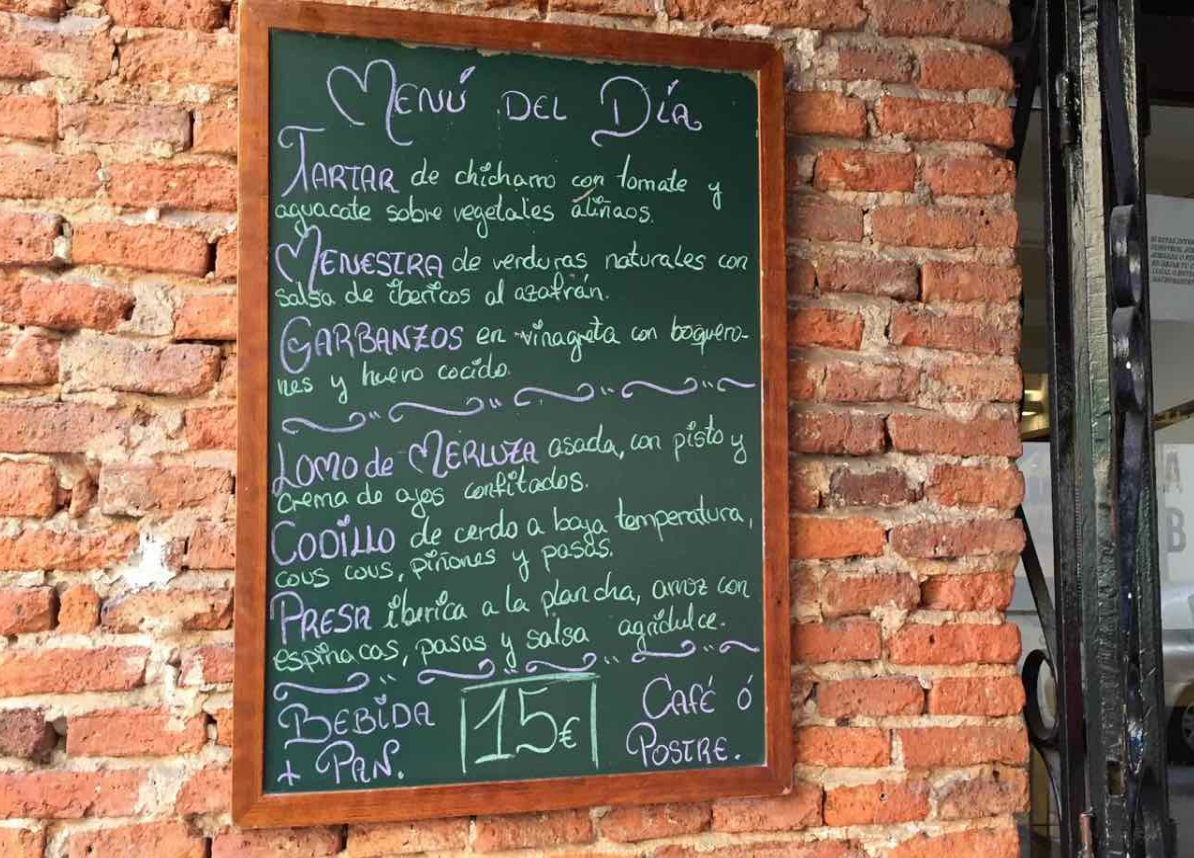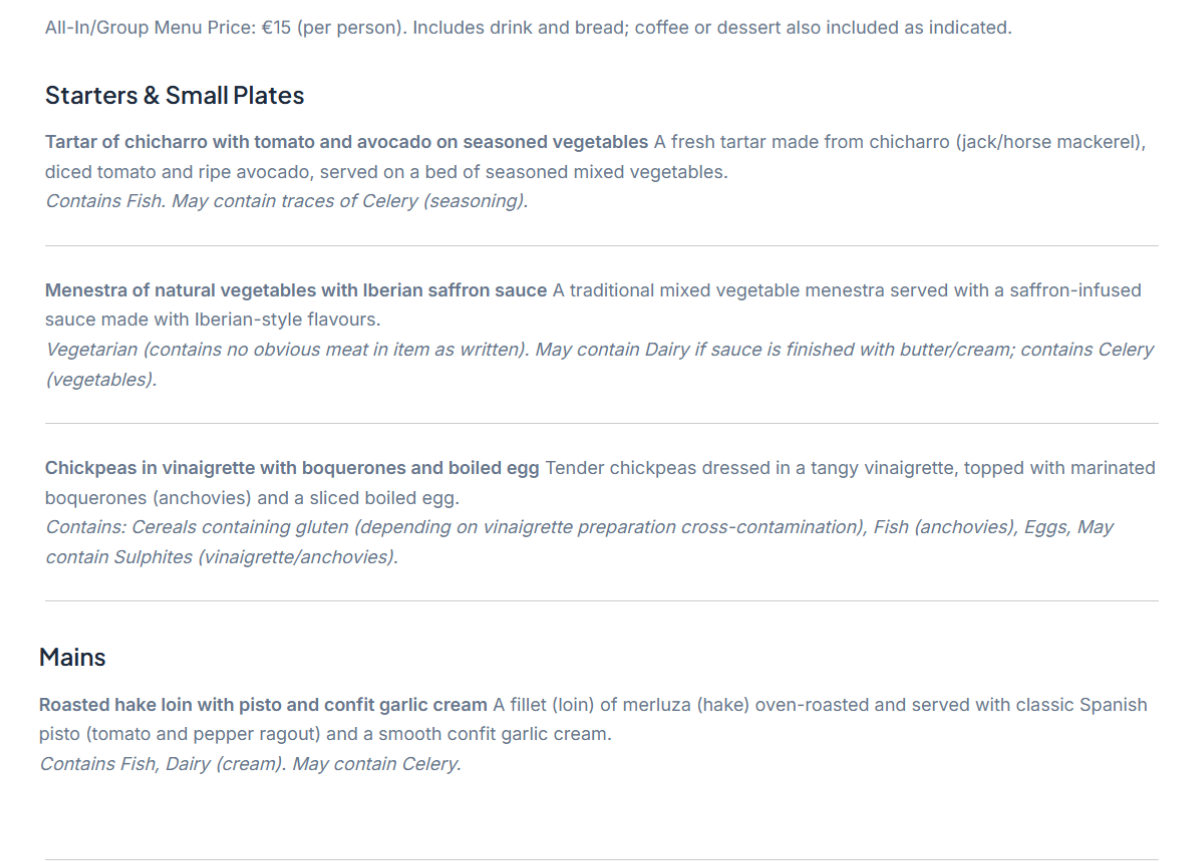The Structured Menu Database for Food Tech
We turn unstructured menu images into machine-readable, queryable data
Powering the next generation of SEO, Voice, AI, and Dish-level discovery for leading platforms.
The Multi-Billion Dollar Blind Spot in Food Tech
Despite massive investment, restaurant discovery is stuck in the past. Every major platform relies on user-uploaded photos and PDFs—unstructured data that is impossible for machines to read. This isn’t just a minor inconvenience; it’s a fundamental roadblock to innovation that creates four critical failures:
- ❌ The Voice & AI Search Failure: Voice assistants and LLMs can’t parse a blurry image. Your platform cannot answer precise queries like “Find a restaurant in London with a vegan burger and outdoor seating under £15.”
- ❌ The SEO Failure: Search engines can’t crawl text inside images. You’re missing millions of valuable, high-intent searches every month for terms like “Dishoom London menu prices” or “gluten-free pasta Barcelona.”
- ❌ The Feature Failure: How can you build dish-level search, price tracking, or accurate dietary filters without structured data? The answer is, you can’t. Your product roadmap is stalled.
- ❌ The User Experience Failure: Users are left squinting at outdated, frustrating photos that can’t be translated or searched, damaging engagement and trust.
This data gap is holding your platform back from the next generation of discovery.
What’s Missing from Your Restaurant Data?
Your platform has the restaurants. But can it answer the questions users are actually asking? The limitations of image-based menus create a ceiling for your product’s potential.
- “Show me all restaurants in Madrid that serve Octopus.” (Dish-Level Search)
- “Hey Google, read me the dessert menu from Bar Brutal.” (Voice Assistant Integration)
- “Notify me if the price of the truffle pasta at L’Antica changes.” (Price Tracking)
- “Find a place for my business lunch with a private room and a set menu under €40.” (Advanced Filtering)
Without machine-readable menu data, the answer to all of these is “no.” You’re leaving revenue, user engagement, and market leadership on the table.
Image vs. Intelligence
See how we transform frustrating, static menus into powerful, structured data. Our AI extracts or creates every dish, price, and description into machine-readable text, enabling features like search, translation, and dietary filtering.

Step 1 (Find)
Data Acquisition
Our systems continuously discover and aggregate menus from a vast network of sources across major global cities.

Step 2 (Translate)
Structure & Enrich
Proprietary AI and OCR technology digitizes, categorizes, and tags every menu item, price, and dietary flag into a clean, structured JSON format.

Step 3 (Explore)
Publish & Integrate
This rich data is delivered via our consumer sites or directly into partner platforms via API, enabling powerful search and recommendation features.

How We Build the World’s Most granular Menu Database
Our competitive advantage is a scalable, semi-automated pipeline that systematically transforms raw data into intelligent, structured menus. Our process combines proprietary automation with a powerful affiliate model for limitless growth.
Our Scalable Data Acquisition Engine
Phase 1: Automated Foundation Building (0-24 Hours)
We begin by rapidly building a comprehensive restaurant foundation for any new city.
- Technology: Custom Python scripts integrated with Google Places API.
- Output: In under 24 hours and at near-zero cost, we generate a database of 7,500-11,500 restaurants, complete with names, addresses, coordinates, and contact details. This solves the critical first-mover problem of market entry.
Phase 2: AI-Powered Menu Processing & Enrichment
Our core technology takes over to find, process, and enrich menu data.
- Menu Discovery: Bots automatically hunt for digital menu sources (PDFs, Images. Webpages).
- Intelligent Data Extraction: We download and convert all the menus we find into raw text.
- AI Enrichment: Using Propriatory AI, we translate text, generate descriptions, infer dietary tags (vegan, gluten-free), and structure everything into a clean, queryable format.
- Human-in-the-Loop QA: A final manual verification step ensures gold-standard data quality before import into our live sites.
Phase 3: Strategic Crowdsourcing for 100% Coverage
To capture menus not available online, we deploy a scalable, incentivized strategy.
- The Affiliate Model: We provide affiliates with the tools to populate their city site. In exchange for a fully-built website, they contribute local knowledge and manpower to add hard-to-find menus via crowdsourced images.
- Efficiency: Our refined processes allow an affiliate to add 20-30 verified menus per hour, making complete city coverage a achievable goal, not a theoretical one.
The Result: A Uniquely Powerful Asset
This hybrid approach results in a living database that is:
- Deep: Launching with 2,000+ menus and growing to near-total coverage of any city.
- Intelligent: Every item is structured, translated, and tagged, making it machine-readable and AI-ready.
- Scalable: The model can be deployed to any city globally with minimal upfront investment.
- Defensible: The combination of automated technology and an engaged affiliate network creates a significant barrier to entry for competitors.
- Always Up to Date Omce we identify the sources it is trivial to revisit and update our menus.
This isn’t just data collection; it’s a systematic process for building the definitive dining database for any market on earth.


